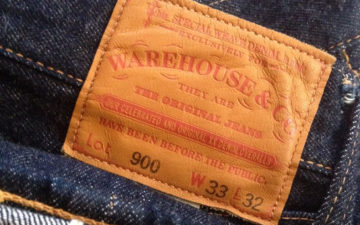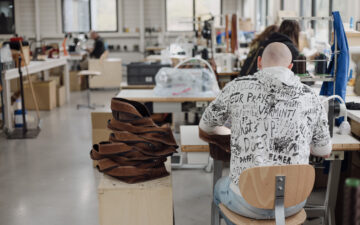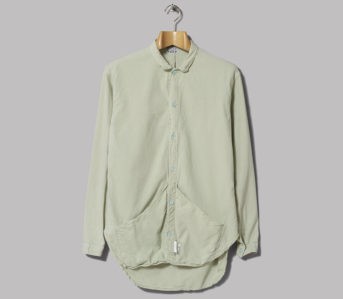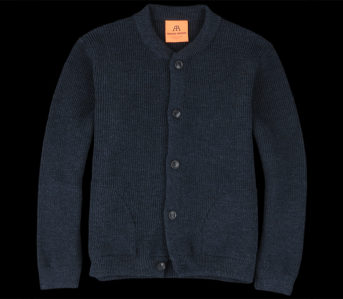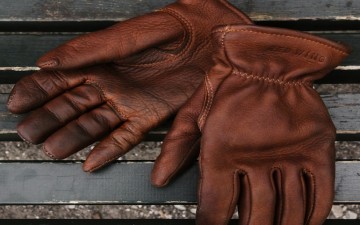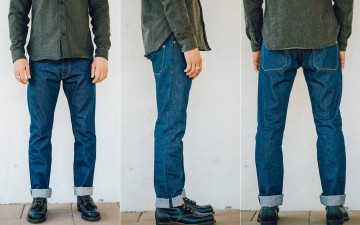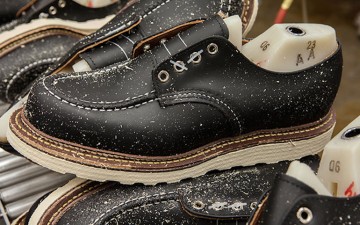They might not teach you this in school, but late nineteenth-century Red Wing, Minnesota was a bustling, exciting place. In 1873, Red Wing held the distinction of being the most efficient producer of wheat in the entire country and several years later, the discovery of natural clay beds launched a successful stoneware industry.
Warehouses and factories had to be built to accommodate these booming industries and European immigrants began establishing workshops and factories all over the city, continuing and furthering the craft they had learned in their home countries. From its inception, Red Wing was a city built on hard work and good fortune and so too would Red Wing Shoes. The now century-old shoe company would find its footing by designing models that catered to the needs of each of the burgeoning new industries in their hometown and eventually to workers all over the country.
Red Wing Shoes’ Philosophy and History
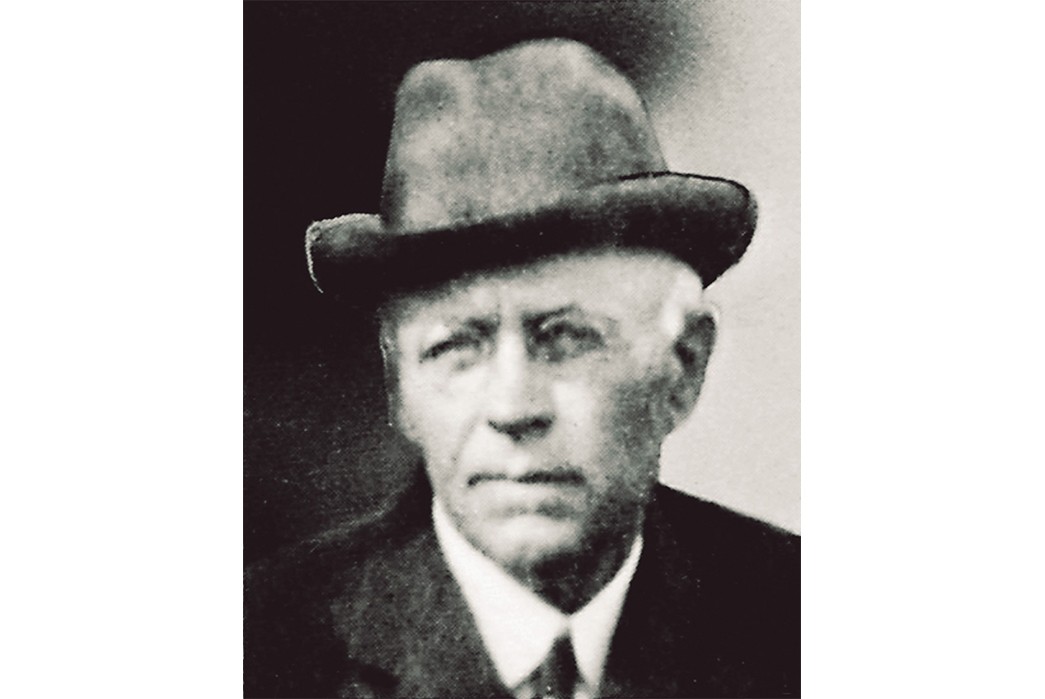
Charles Beckman, founder of Red Wing Shoes. Image via Red Wing Heritage.
Charles Beckman founded Red Wing Shoes in 1905. Beckman was a savvy businessman and knew firsthand from his time as a shoe merchant that many of the workers and farmers in Red Wing, MN were wearing ill-fitting and ill-designed shoes. Beckman decided something that may seem obvious to a modern audience but was absolutely revolutionary in his day: that there needed to be a specially designed shoe for each kind of job. And in 1905, for the first time, the technology existed to do this on a massive scale.
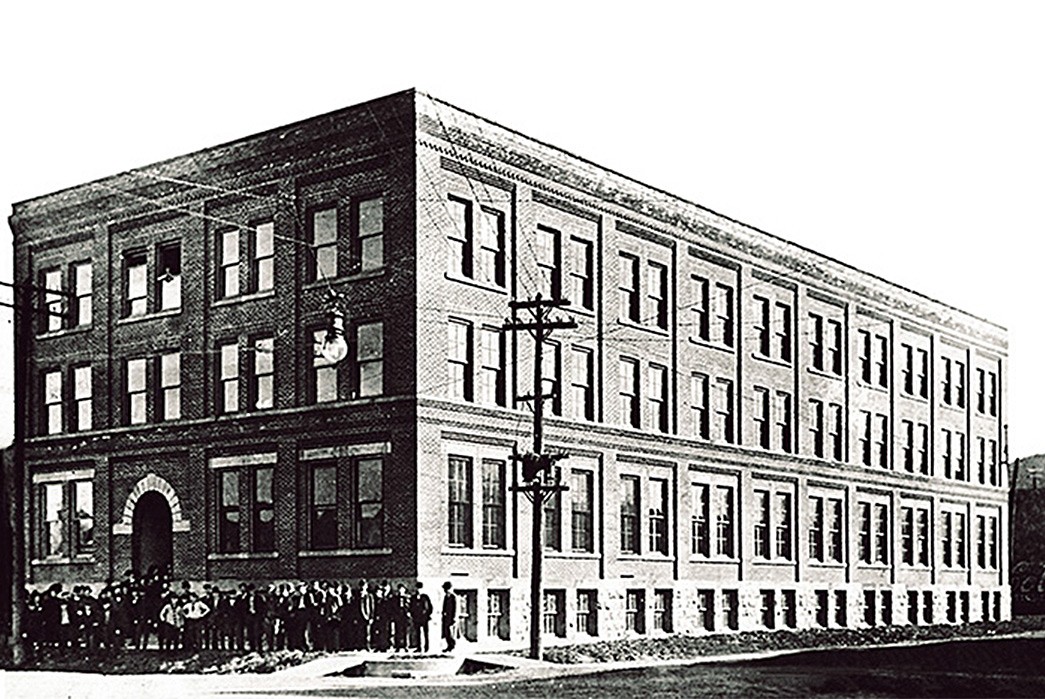
Red Wing Factory in Red Wing, MN. Image via Red Wing Heritage.
Three years later, Beckman would open the Red Wing factory on the corner of Main Street and Potter. Now, with a state-of-the-art manufacturing facility and a partnership with S.B. Foot Tanning Company, Red Wing Shoes had everything it needed to succeed. Now they were producing 450 pairs of shoes in a workday.
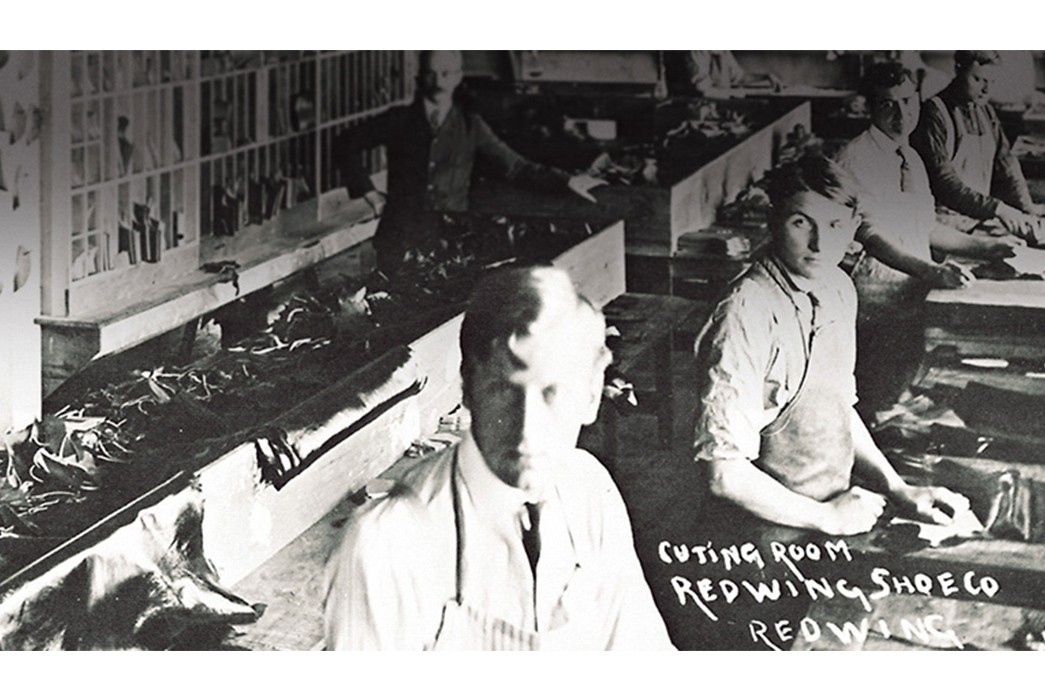
Cutting Room. Image via Red Wing Heritage.
The first profession to receive a specialized shoe from Red Wing was farming. After all, it was their dedication to wheat production that first put the little riverside city on the map and it seemed only fair that their feet should be attended to first.
Red Wing’s farming shoe was called the Black & Brown Chief Shoe and was created in 1912. Apart from a grainy image in this history video, there seems to be no images of this landmark piece of footwear anywhere on the internet. But from the brief snippet on grainy film, you can see what looks like a pull-on boot with an image of the famous Native American chief, Chief Red Wing, on the sole.
The shoe was made from “manure-proof leather”, which was undoubtedly good for farmers, but this combined with the face on the sole seems somewhat troubling to a modern audience. The symbolism, however unintentional, of placing a famous Native American likeness between your feet and the manure you walk on seems problematic at best.
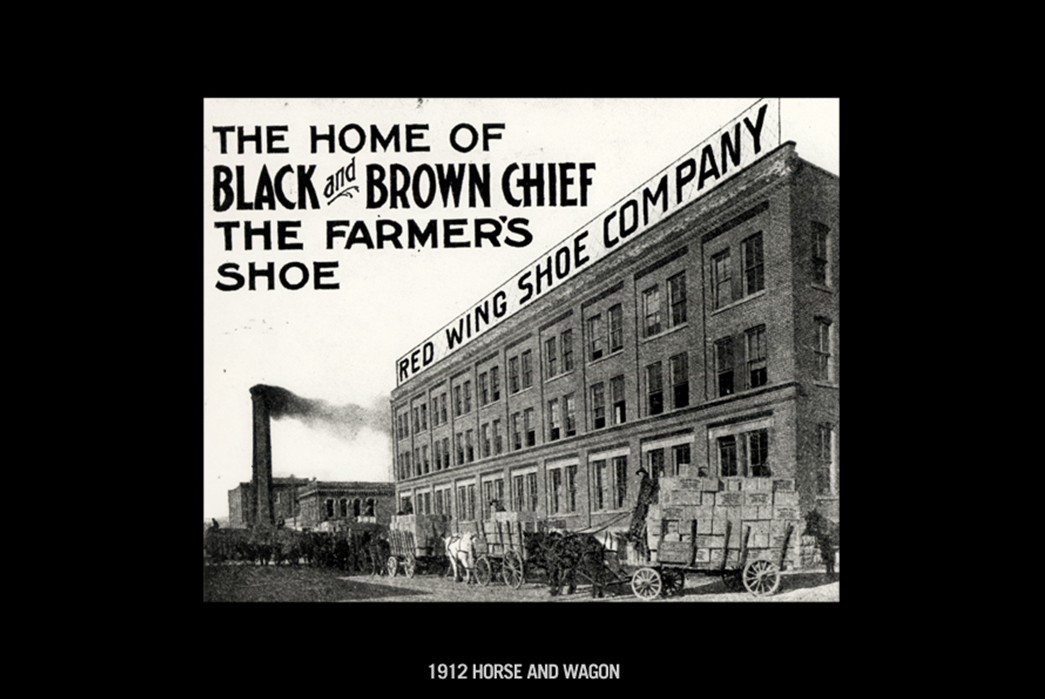
Black and Brown Chief Shoe. Image via Red Wing Amsterdam.
But the calm little factory in Minnesota would be turned upside down by the beginning of World War I only a few years later. The men working in the factory left to fight, but Red Wing still had an obligation to its country and brought women into the fold for the first time to make the now-famous Pershing Boot for our boys abroad.
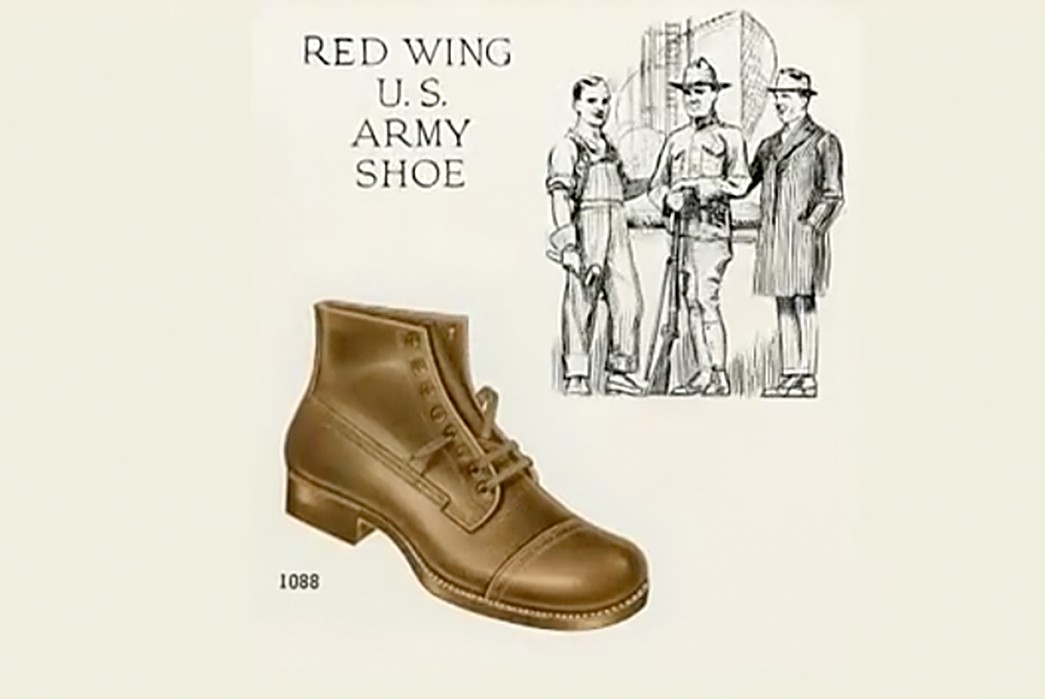
Red Wing “Pershing Boot.” Image via Stuarts London.
The 1088 boot begins to resemble the very favorite of the current Red Wing Heritage line. It is obviously Goodyear welted with a stacked heel and seems to feature triple-stitched seams as well. Well-made boots are important in every war, but they were especially crucial in the trenches of World War I. If your boots let moisture in, you could actually lose your feet, as prolonged exposure to cold, wet conditions could lead to “trench foot.” The fact that these boots stayed popular even after the war must be a testament to their structural integrity.
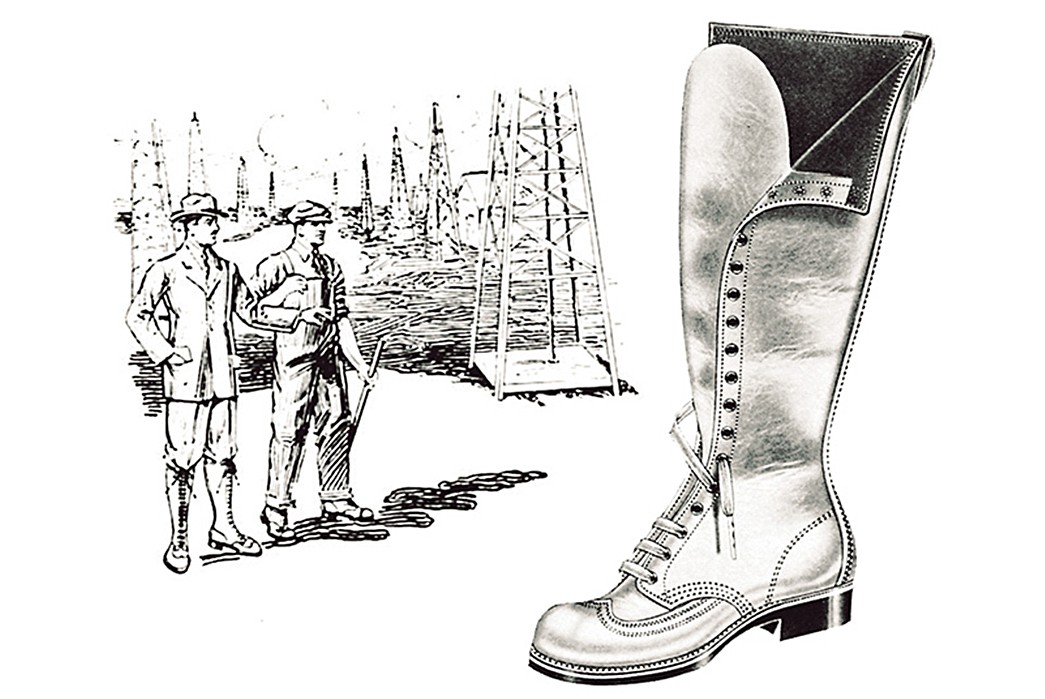
Oil King boot. Image via Red Wing Heritage
A more mechanized world had a greater need for oil and workers in this newly-thriving industry again turned to Red Wing Shoes for something to meet their specific needs. Red Wing answered with the Oil King boot in 1920, which brought comfort and oil-resistant leather to the field.
The 1920s were a prosperous and creative time for the folks at Red Wing shoes and during this period the company was able to begin to more fully realize Beckman’s dream. The company turned out specialized footwear for every demographic and activity: boots for riding, boots for boys, boots for women, but of course this couldn’t last and in 1929, the Great Depression hit. (Side note: it was in the 1920s that Red Wing bought the Puritan Sewing Machines that they still use today.)
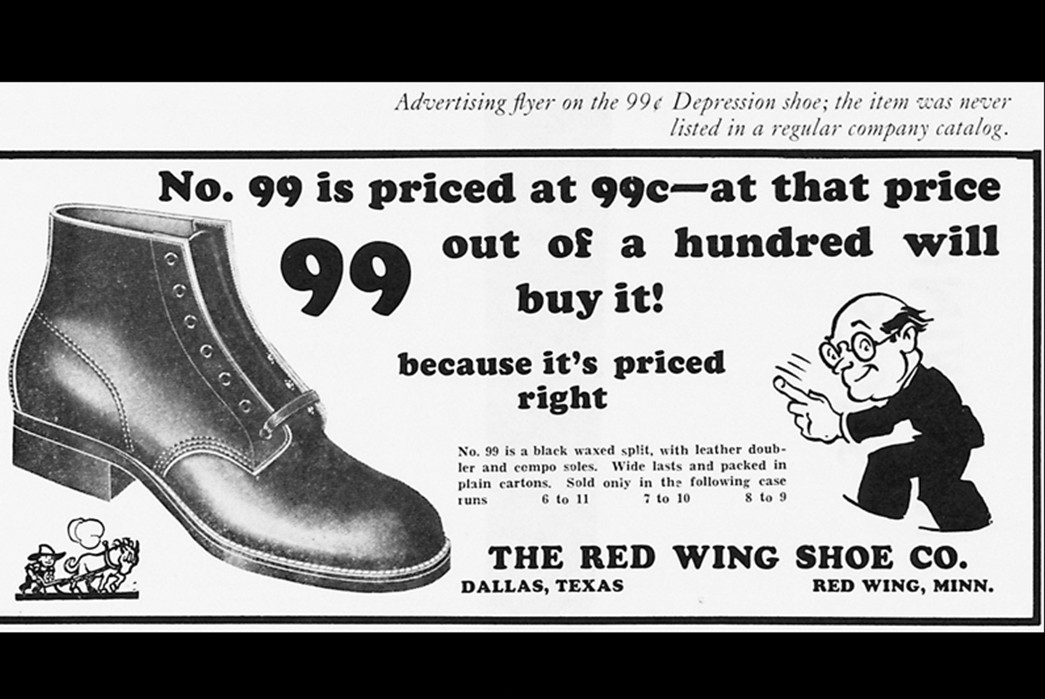
99 cent boot. Image via Red Wing Amsterdam.
Luckily, a new president, J.R. Sweasy had arrived and he brought with him a novel idea: rubber soles. Red Wing’s experiments with rubber soles in the late 1920s would not only mark the first step into the creation of fully-synthetic shoes we see today, but also significantly reduced costs for the company. This allowed for the no.99 boot to be made, which as you can see in the ad above, only cost $0.99. Even in times of economic hardship, Red Wing demonstrated they still cared about their working-class customers.
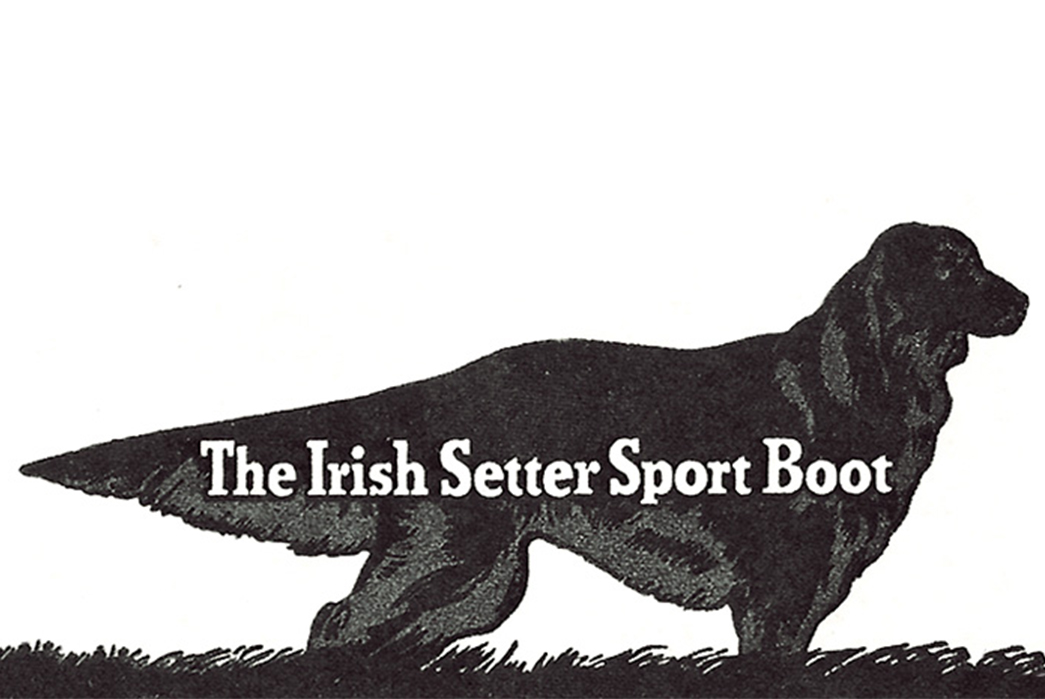
Irish Setter Sport Boot. Image via Red Wing Heritage.
World War II and the inevitable government contracts helped get Red Wing back on track, but it would be the 1950s in which many of the iconic current Red Wing models were first created.
1952 marked the launch of the Irish Setter Sport Boots, so-called because the color of the leather resembled the coat of an Irish Setter. The 1950s would also see the proliferation of the moc-toe boots as well as the Postman Oxford. While Red Wing shoes and boots were still popular among working people, they were now also being pitched to the average outdoorsy joe. To many, the 877, the original moc-toe, and its shorter cousin, the 875 are the essential Red Wing shoes.
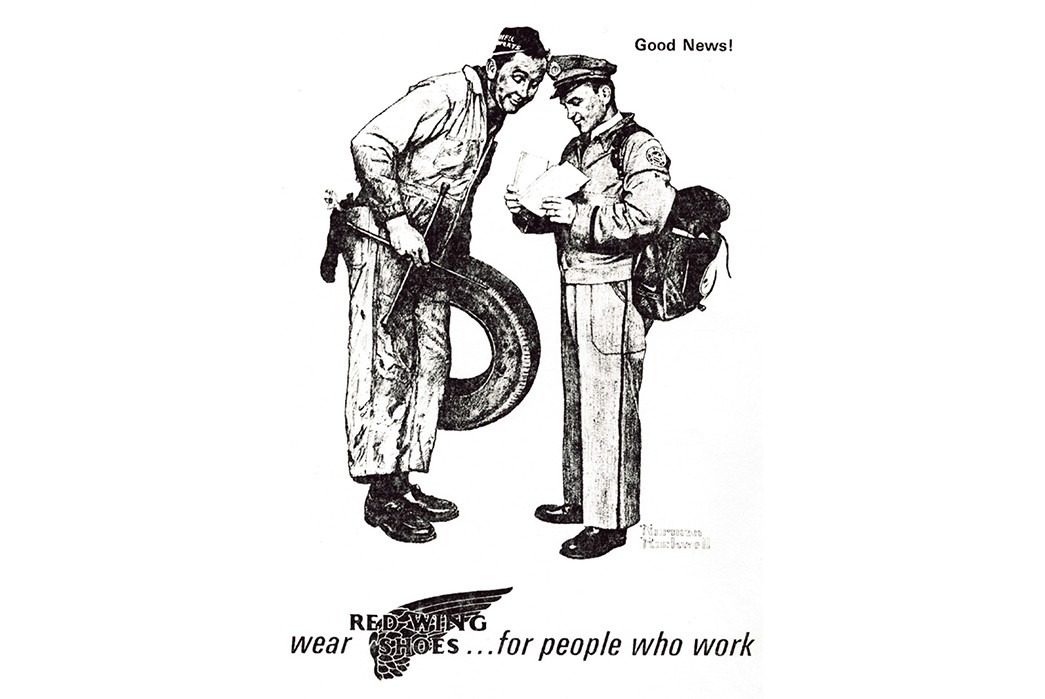
1966 Red Wing ad by Norman Rockwell.
The boom times of the 1950s and the success of the Irish Setter allowed for a relatively comfortable period in the 1960s. A new factory opened and Norman Rockwell was hired to make ads for the company as seen above. The 1970s were an extremely difficult time for many American shoe companies like Wolverine, but there is no mention of this on the official Red Wing company timeline. The next major landmark they cite is the acquisition of the S.B. Foot Tanning Company in 1987.
Red Wing Today
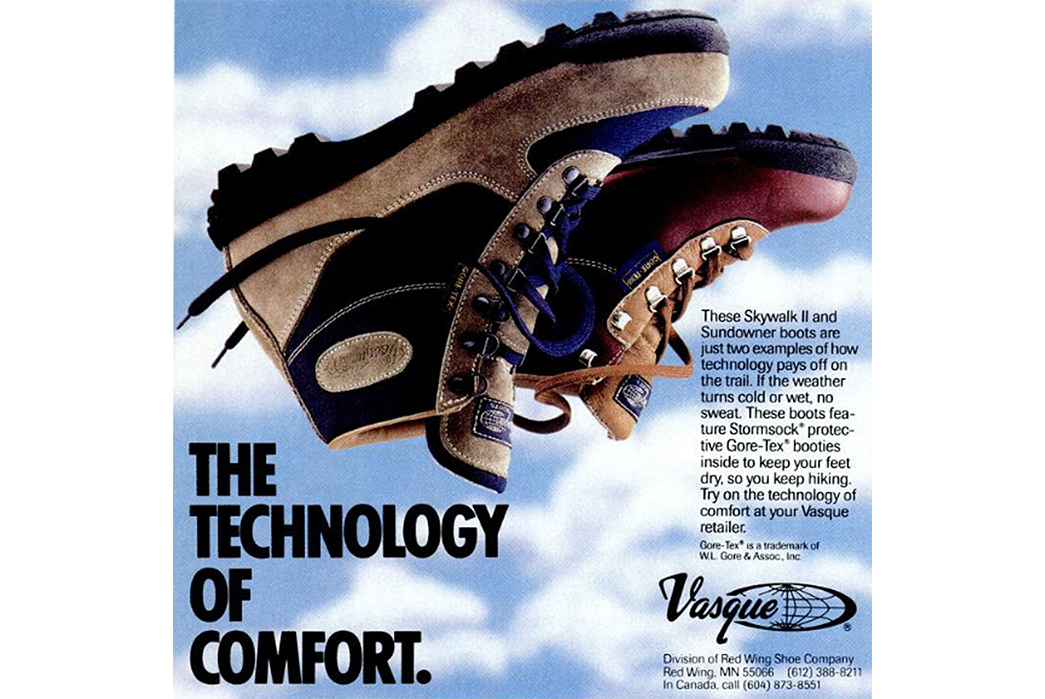
Vasque Boots. Image via Etsy.
Red Wing was saved from the troubles of the 1980s by a new hiking craze in the 1990s. Their offshoot company, Vasque, allowed them to prosper from this new fad. It was also around this time that quality began to suffer, the non-Red Wing lines like Irish Setter, Worx, and Vasque began to be manufactured outside of the United States. Now, 60% of Red Wing boots are made in the U.S., but some sites assert that they are merely assembled here and made from raw materials sourced from China, Korea, and Vietnam.
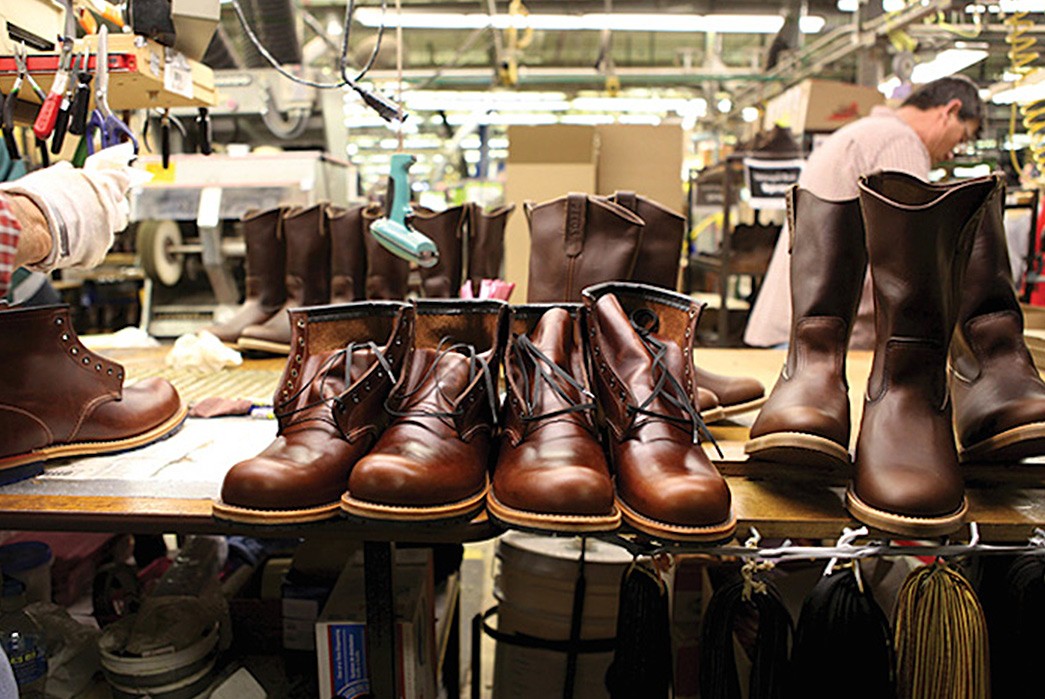
Red Wing Factory Today. Image via A Continuous Lean.
While mainline Red Wings may not be much to write home about, all Heddels readers know that the heritage models are quite different. Founded in 2008, Red Wing Heritage has revived many of the most famous Red Wing models, producing them to the exacting standards of yesteryear in their American factories. Sold at a significantly higher price point, the heritage boots show the best face of this classic brand.
Key Characteristics of Red Wings
Goodyear Welted
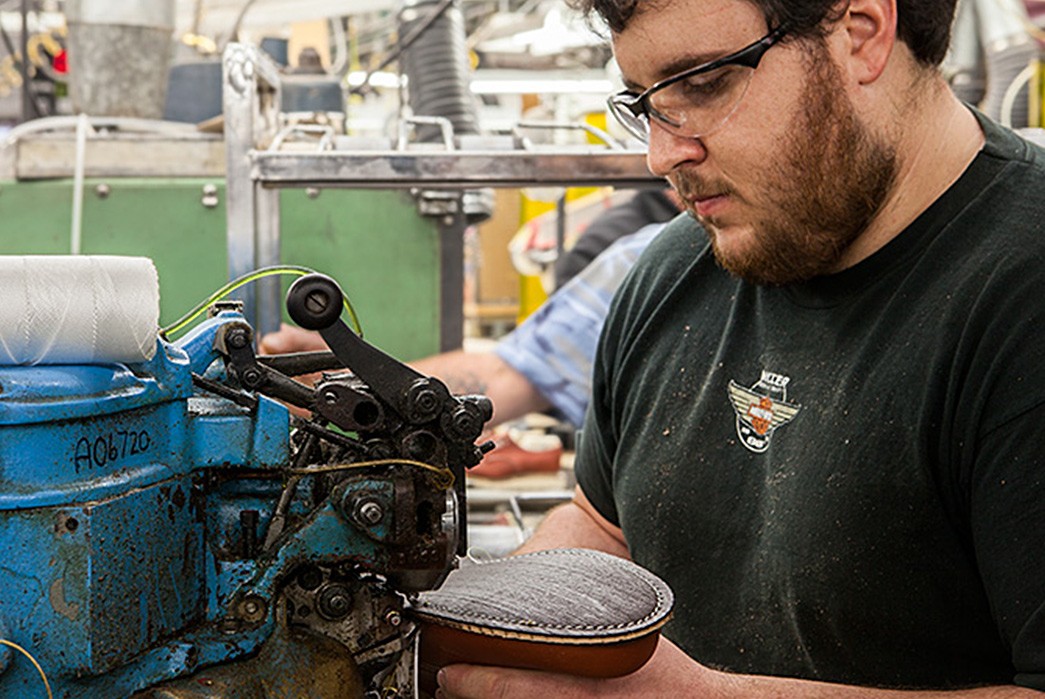
Goodyear welting. Image via Red Wing Heritage
Red Wing shoes and boots are Goodyear-welted, meaning their soles can be replaced if ever they wear out and the upper of the shoe can be kept indefinitely.
Label on Inside of Tongue
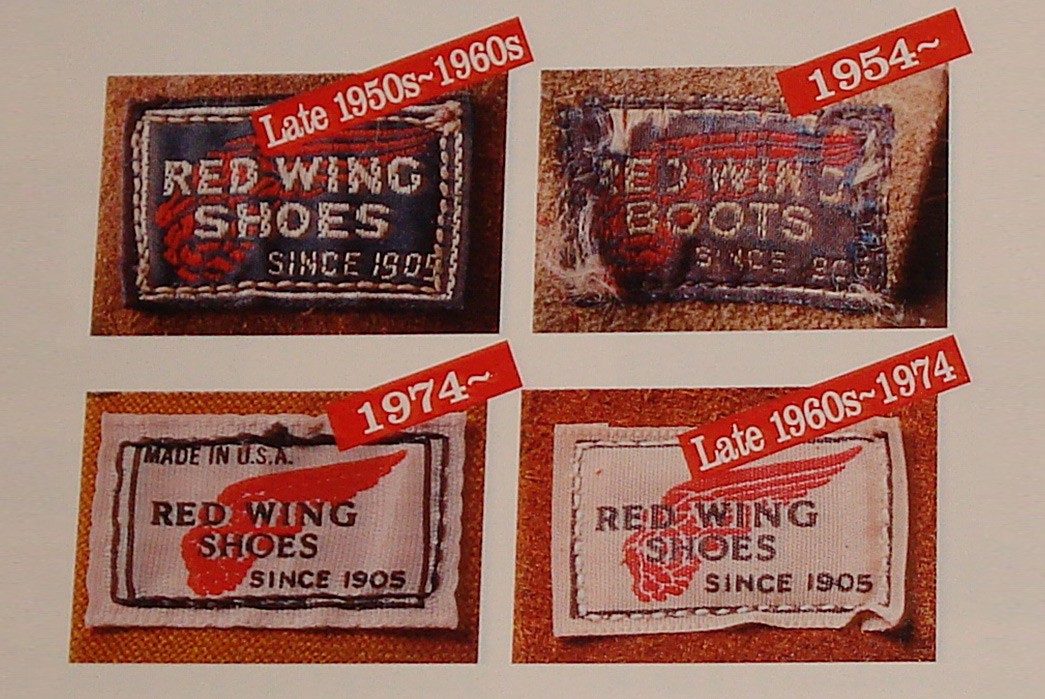
Labels. Image via Nostalgia on Wheels.
All Red Wings (with a tongue) feature a label there.
Triple Stitch Construction
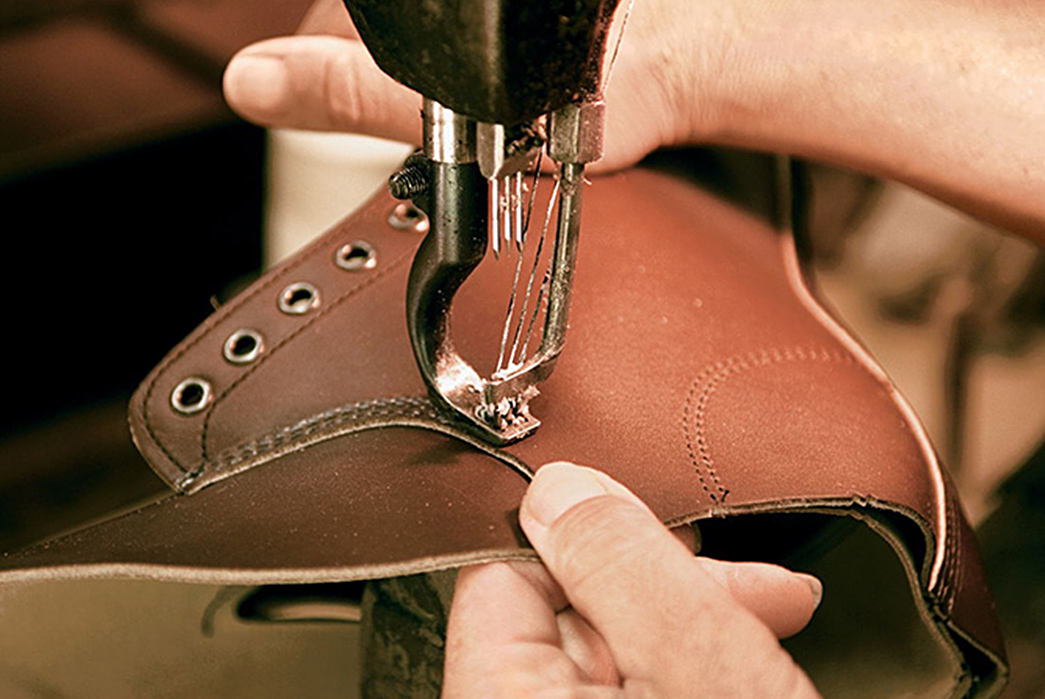
Triple Stitch Construction. Image via Red Wing Heritage.
Red Wing don’t mess around. They use triple-stitch construction to make sure your seams stay solidly in place. This famous stitch is done on Puritan Sewing Machines, many of which have been in constant use at the factory since the 1920s. While effective, these machines are often temperamental (and also very old) and are kept alive by a team of skilled repairmen.
Nitrile Cork and Christy Wedge Soles
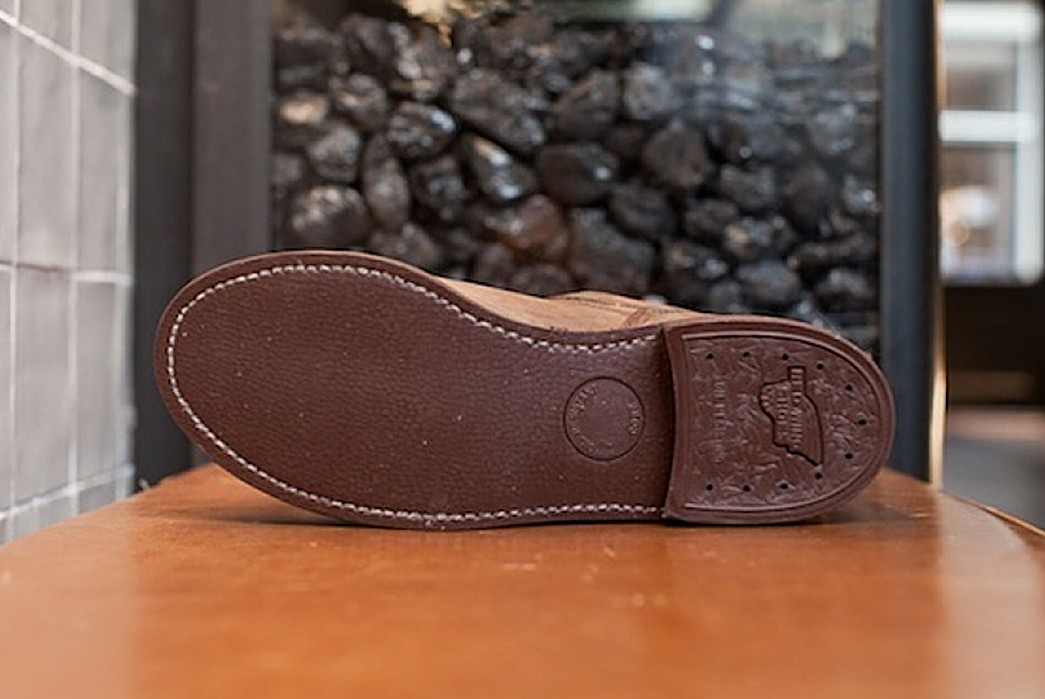
A nitrile cork outsole. Image via Red Wing Amsterdam.
One of the great advances made by Red Wing was to incorporate synthetic materials in the outsole of the boot, which saved money and made the entire boot last longer. This is now common practice, but Red Wing did it first.
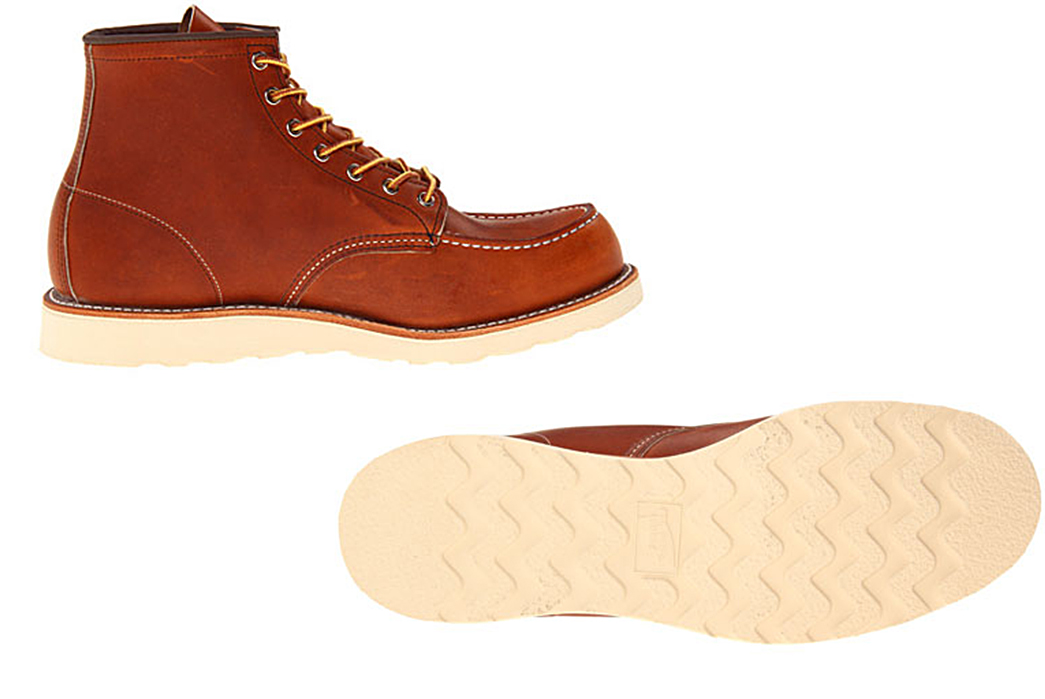
Christy Wedge. Image via Heddels.
Iconic Models
Iron Ranger
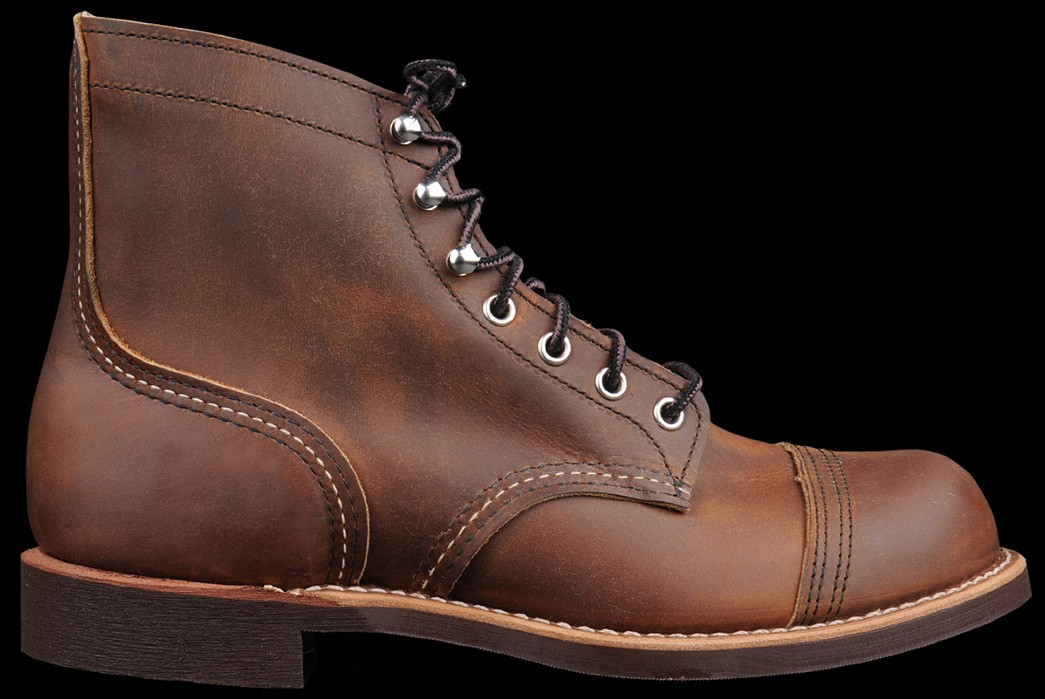
Iron Ranger. Image via Unionmade.
The Iron Ranger was made for the unique conditions faced by Minnesotan miners digging for iron ore. It featured oil-resistant leather, speed hooks for easy removal, and a double-layered toe for safety. The Iron Ranger has remained one of the most essential items in the Red Wing collection.
Available for $349.99 from Revolvr.
875/877 Moc-Toe
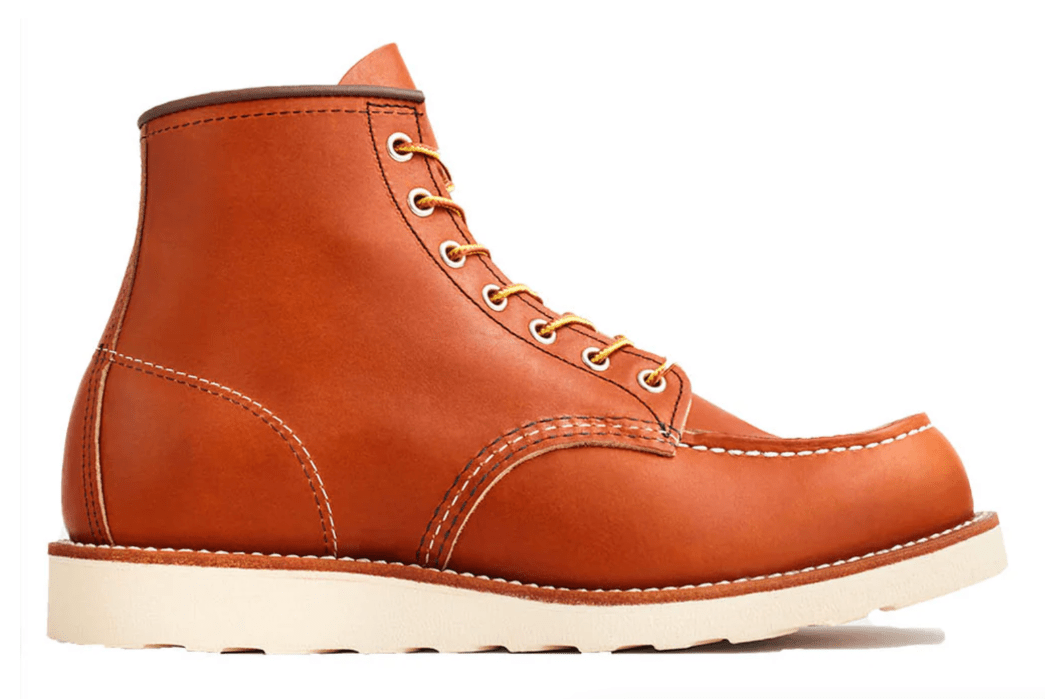
As mentioned earlier, the 875 and the 877 have come to truly represent the Red Wing brand. Featuring a moc-toe and a “Traction Tred” crepe sole, the 875 is the 6-inch version and the 877 is the 8-inch older brother. A modified version of the sportsman’s boot, these were designed to meet the needs of factory workers in the mid-1950s.
Welted and stitched to perfection, you can pick these for $309.99 from Revolvr.
Pecos Boot
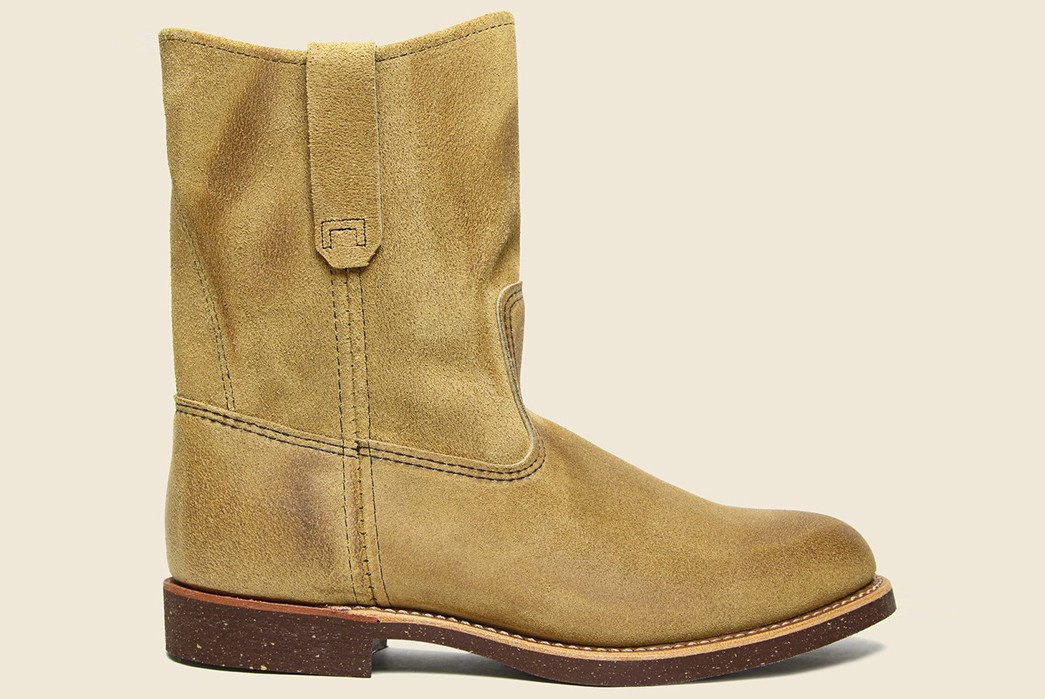
Pecos Boot 8188. Image via Stag Provisions.
The Pecos 8188 is an imperfect reproduction of the original and famed Pecos Boot. Originally meant as a more subtle and effective answer to the elaborately designed cowboy boots of its day, the Pecos was loved by the working men of the American West. This reproduction differs in heel height and shaft width from the OG. The original has a higher stacked heel and a longer, slimmer shaft. These more authentic details can be seen in the Eat Dust/ Red Wing collaboration and in the Snake Oil Provisions exclusive Pecos.
But with the subtler heel and handsome hawthorn leather, the 8111 is another excellent choice and it can be had from Stag Provisions for $320.

